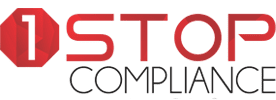
Most Violated OSHA Regulations
Working as a 3rd Party Safety Consultant provides an in-depth exposure & understanding of the OSHA regulations as they relate to our clients. In this field, we work and develop relationships with clients spanning a wide range of industries, from manufacturing & construction to agriculture and mining. The following list of regulations is the most common we have seen clients cited for over the years.
- Fall Protection 1926.501 (Construction)
- Hazard Communication 1910.1200
- Scaffolding 1926.451 (Construction)
- Respiratory Protection 1910.134.
- Lockout/Tagout 1910.147
- Ladders 1926.1053
- Powered Industrial Trucks 1910.178
- Machine Guarding 1910.212
- Personal Protective Equipment – Eye and Face Protection 1926.102 (Construction) 1910.133 (General Industry)
- Respirable Crystalline Silica 1926.1153 (Construction) 1910.1053 (General Industry)
Examining Your Own Work Place
This year it is time to look at your own workplace and see where solutions can be found. These violations are very common and have been prevalent in the American workplace for a long time. This is now the 9th year in a row that Fall Protection has been the #1 most cited violation. The answers & solutions to maintaining OSHA compliance are out there, but it’s all about finding the best solution and implementing it.
Now is the Time for Change
Now is the time for change within your company’s safety culture. With OSHA actively inspecting workplaces & job sites looking for Fall Protection and Silica violations to name a few, how can these companies make OSHA compliance a top priority? The major step that needs to be completed is having an in-depth workplace evaluation conducted.

Preventing Common Workplace Equipment Accidents
Operation of heavy equipment such as forklifts, aerial lifts, and cranes can be dangerous and should always be done by trained, skilled operators. These operators must be able to demonstrate their ability to operate safely. Not only can knowledge of the equipment prevent an accident, but it can also provide more confidence in the operator as well.
Basic Equipment Safety Rules
Before operating a new piece of equipment, the employee needs to be fully trained. They should have knowledge of how the equipment works, what it can accomplish, and how to properly use it. After training is complete, they should be tested on the equipment. Once their supervisor or trainer agrees they are competent enough to use the equipment, they always have the option to retrain and refer to their written programs in the future.
Crane Safety Tips
Cranes should be inspected prior to use by a competent person and operated only by qualified and trained personnel. Serious injuries and fatalities can occur when parts of the crane come in contact with a power line, workers are struck by the crane load, or during the assemble/disassemble process. Here are a few key items to keep in mind:
- Inspect all rigging prior to use
- Do not move loads over workers
- Watch for overhead electric power lines
- Do not exceed the load chart capacity
- Follow all manufacturer’s instructions
- Barricade the crane’s swing radius
Forklift Safety Tips
Only trained and certified personnel can operate a forklift. Ensure you are trained on the specific forklift you are required to use.
When operating or working near a forklift, a handful of risks can present themselves, such as collisions, falls, tip-overs, and struck-by hazards. Below are a few ways to prevent these hazards:
- Do not use the forklift to lift people
- Keep forklifts in good, clean condition
- Watch for pedestrians
- Do not raise/lower the lift while operating
- Never exceed the rated load capacity
- Always wear a seatbelt
Aerial Lift Safety Tips
Aerial lifts have become a more common piece of equipment due to their ability to move and be flexible in tough situations. With that being said, they also carry a long list of hazards associated with them. Only trained and authorized personal are allowed to operate these lifts. We are sharing some tips on how to work safely with aerial lifts:
- Conduct pre-start inspections
- Use wheel chocks on sloped surfaces
- Do not climb or lean over hand/guardrails
- Be aware of overhead clearances and objects
- Do not drive with the lift platform raised
- Do not exceed the load capacity limits
The easiest way to get your workers trained on these topics…

Safety Manuals for Contractors
In order to be in compliance is OSHA, 3rd party auditors like ISNetworld, and other governing agencies, contractors need to have a comprehensive safety program manual in place. The contractor safety manual should flow down to all sub-contractors throughout the scope of the project. Many sub-contractors may already have a safety program in place, but some may not, and some may have insufficient or out-of-date safety manuals that do not fully address all aspects of ensuring employee safety. Having a contractor safety manual in place should cover all aspects of worker health and safety for all jobs being performed across the project.
Conducting a Contractor Safety Compliance Audit
The most effective safety programs are proactive in nature. Contractors should be aware of all work activities that need to take place in the development of a project, which puts overall project safety squarely on their shoulders. The process of developing a safety program in itself can help catch potentially dangerous situations prior to them becoming an issue. Whether it is equipment or process improvements, additional PPE, or elimination of hazards, it is important that these are audited on a regular basis. If there are preventable health and safety risks, they can be addressed, corrected, or improved ahead of the work actually being performed. Ongoing safety compliance audits should become part of any business with high hazard equipment, processes or environments.
The Importance of a Contractor Safety Program
According to OSHA, contractors and subcontractors are deemed to have joint responsibility for the work being performed (1926.16). Subcontractors are only responsible for their respective tier of work; however, a contractor will be responsible for all activities that take place across the entirety of the project. Thus, a contractor should incorporate the development of a comprehensive safety program manual into the planning stages of the project. Keeping safety in mind throughout the duration of the project helps ensure workers remain safe, the project is in compliance with OSHA, & limits contractor liabilities.
Developing a Contractor Safety Manual
There are 3 main components in developing a contractor safety manual:
- Compliance with OSHA laws
- Providing a workplace free of serious recognized hazards
- Examining workplace conditions to ensure compliance
OSHA compliance begins with implementing OSHA Standards that address known major hazards that may exist in the workplace. OSHA compliance also requires accurate record-keeping of any workplace incidents that affect the health and safety of employees, known as OSHA 300 logs. These logs record any injuries or illnesses caused in the workplace by potential hazards, and corrective actions that need to be taken to prevent a violation from occurring again. The key here is to be proactive and take all potential hazards into consideration while a contractor develops a health and safety program that complies with OSHA laws.
All contractors, industries, and businesses engaged in performing potentially high hazard activities that may result in injury or illness to an employee need to take the appropriate steps to evaluate their business processes and operations in order to develop an appropriate health and safety program to be compliant with OSHA laws. This should be a time-intensive endeavor that a contractor undertakes in order to provide a safe work environment for their subcontractors and their employees. Any oversights in the audit process could lead to OSHA violations, employee injuries, legal fees, insurance costs, and other issues.
Step 1
Any OSHA compliance audit should begin with a thorough identification of potential physical hazards present in the workplace. These hazards should be addressed and remediated at that time as they pose the greatest immediate threat.
Step 2
Develop customized health & safety manuals containing any applicable OSHA Standards with modern and relevant updates. Research outside sources such as the National Security Council, ANSI, and other safety regulatory bodies relevant to the hazard present in the workplace for the most up-to-date information and guidelines.
Step 3
Develop health and safety training protocols and procedures that are customized to your operations. Training should be conducted by a competent trainer, and should be done at the time of employee hire, and at least annually for all employees exposed to the specific hazards. The training process should be time-consuming, taking 30-60 minutes per topic, or longer if required, to ensure proper training has occurred.
Developing a Contractor Safety Manual
Many contractors decide to enlist the help of outside resources to save precious man-hours and eliminate any potential oversights that may be missed if done strictly internally. The process of developing a comprehensive contractor safety program manual is a time-consuming process, and can be an overwhelming responsibility for businesses large and small. Working with a safety compliance service company like 1 Stop Compliance can help you identify workplace hazards and develop the appropriate contractor safety program to ensure you are in full compliance with governing safety agencies like OSHA.
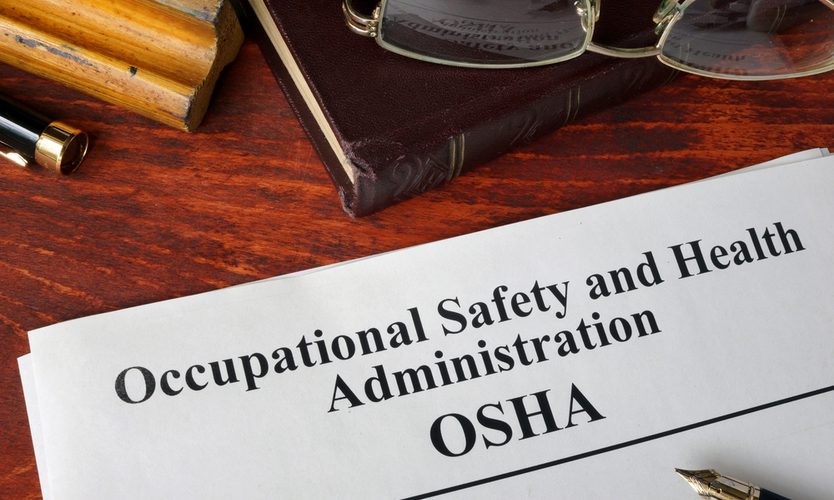
OSHA News in June 2021
June 2021 saw an increase in activity from OSHA as over 20 companies across the United States saw themselves cited, fined, or sued by the government organization.
Below are a few of the highlights from this month:
-
Region 3 OSHA News Release – Oaks Integrated Care failed to protect workers from coronavirus exposure at two New Jersey facilities
-
Region 5 OSHA News Release – Lansing chemical manufacturer to reinstate whistleblower who questioned accounting practices
-
Region 7 OSHA News Release – Citation towards grain facility for workplace safety failures following dust explosion that severely injured worker
-
Region 3 OSHA News Release – US Department of Labor sues Pennsylvania manufacturing company, owner for firing employee in retaliation for reporting safety concerns
-
Region 4 OSHA News Release – Citation towards Toccoa plastic recycler for violating safety standards after worker sustains fatal injuries from a fall
-
Region 2 OSHA News Release – OSHA cites Bronx contractor after 21-year-old laborer erecting scaffolding suffers deadly fall at Brooklyn building project
-
Region 1 OSHA News Release – US Department of Labor cites Rhode Island medical practice, owner for exposing employees to coronavirus in North Providence, West Greenwich
-
Region 6 OSHA News Release – Federal inspection finds San Marcos tortilla manufacturer repeatedly exposing workers to amputation dangers
-
Region 8 OSHA News Release – US Department of Labor reminds North Dakota construction contractors that protecting workers from falls is a matter of life, death
-
Region 5 OSHA News Release – OSHA initiative seeks to protect manufacturing workers in Midwest facilities from hazardous noise levels
-
OSHA National News Release – OSHA issues emergency temporary standard to protect health care workers from the coronavirus
-
Region 2 OSHA News Release – Citation towards pharma, biotech manufacturer for failing to protect workers from coronavirus at Monmouth County facility
-
OSHA News Release – Citation towards Cambria grain facility for workplace safety failures following engulfment death of manager in corn silo
-
Region 8 OSHA News Release – US Department of Labor implements initiative to conduct random, weekend safety inspections to protect construction workers from falls, trench collapses
-
Region 1 OSHA News Release – Lack of hazardous energy control safeguards, unexpected steam release led to two workers’ deaths at Department of Veterans Affairs’ West Haven campus
-
Region 4 OSHA News Release – Fort Myers behavioral healthcare center agrees to revamp its workplace violence prevention program after OSHA investigation of five incidents
To ensure prevention of citations from OSHA, 1 Stop Compliance can act as a Third-Party reviewer to help you keep you OSHA compliant. Our consultants will go through a list of OSHA topics and see if they are applicable to your company. Each topic may require a written program and training. If you need additional training topics or programs, we can add those too!

OSHA Coronavirus Directive Enforcing Emergency Standard Protection
OSHA issued a compliance directive on June 30th, designed to ensure uniform inspection and enforcement procedures for its Emergency Temporary Standard to protect healthcare workers from occupational exposures to COVID-19.
The new directive provides OSHA compliance safety and health officers with guidance and procedures on how to enforce the standard’s requirements for:
- Written COVID-19 plan
- Patient/Non-employee screening and management
- Personal protective equipment
- Aerosol-generating procedures
- Physical distancing
- Physical barriers
- Cleaning and disinfecting
- Ventilation
- Employee health screening and medical management
- Vaccination
- Training
- Anti-retaliation
- Requirements at no cost
- Recordkeeping
- Reporting to OSHA
The ETS became effective June 21, 2021. Employers must comply with most provisions by July 6, 2021, and with training, ventilation, and barrier provisions by July 21, 2021.
Learn more about the COVID-19 Healthcare ETS.
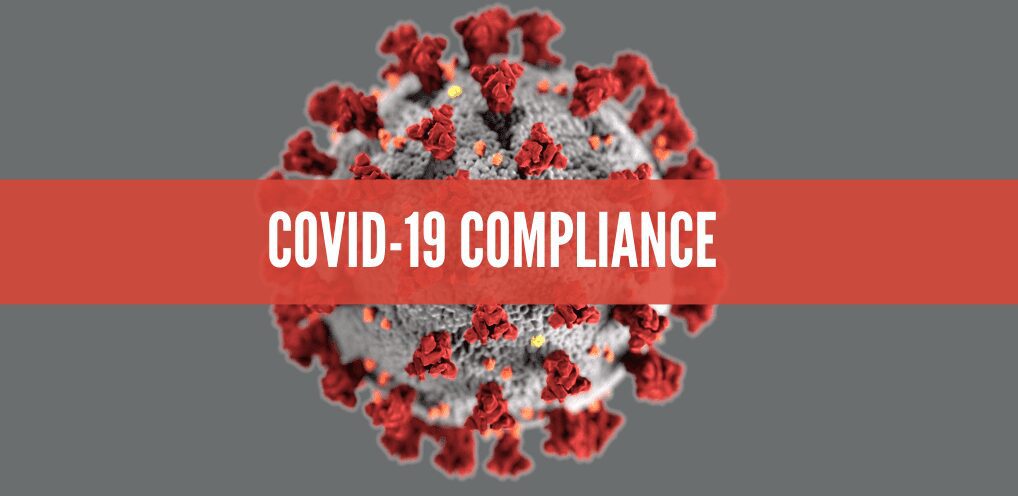
New Rules on Mandatory COVID Vaccination from OSHA
COVID Vaccination from OSHA Rules Update
Is the COVID-19 ETS a law?
Legally as of today, yes, however that could change in the future.
What does this mean for your company?
A federal appeals court has given the Occupational Safety and Health Administration (OSHA) the authority at this time to push forward with the enforcement with of the emergency temporary standard (ETS) for COVID-19 Vaccination and Testing.
At its core the ETS requires employers with more than 100 employees need to implement and enforce policy around mandatory full vaccination against COVID-19 by January 4th, 2022, or submit to weekly COVID-19 testing combined with wearing a mask.
In light of this ETS there are been a number of legal appeals to this decision and even OSHA has stated that they will utilize “enforcement discretion” to give employers additonal time in order to comply. OSHA has stated they will not issue citations for non-compliance with the ETS before January 10, 2022, citations will not be issues before February 9, 2022 for failure to enforce testing, as long as companies are acting in good faith to comply with the orders.
What are the ETS Requirement?
Employers must comply with the following ETS provisions no later than January 10, 2022:
- Develop a written policy mandating that employees either be fully vaccinated, or be subject to weekly COVID-19 testing and wear a mask at work, with few exceptions.
- Determine the vaccination status of all workers by obtaining acceptable documentation of proof of vaccination (e.g., a vaccination card), and maintain a roster of the vaccination status of all employees.
- Fully remote workers, employees who work exclusively outside, and workers who not work in a location where others are present, do not have to be covered under the “vaccination or testing” policy.
- Provide up to 4 hours of paid time for employees to receive the vaccination, and provide “reasonable” paid sick leave to recover from any side effects from the vaccine. (Employers may allow employees to use vacation or PTO for these purposes.)
- Exclude employees from the workplace immediately in the event of a positive COVID-19 test or diagnosis.
- Provide employees with certain information, including what the ETS requires of employers, the company’s policy, information about vaccine safety and efficacy (through an OSHA-approved notice prepared by the CDC), and information about the criminal penalties for fraudulent statements and documentation.
- Report work-related deaths due to COVID-19 to OSHA within 8 hours, and work-related hospitalizations within 24 hours. (This reporting requirement was first promulgated in OSHA guidance in 2020.)
Employers must comply with the following ETS provisions no later than February 9, 2022:
- Implement and begin enforcing the “vaccination or testing” policy.
- OSHA states that will exercise enforcement discretion on the February 9 deadline with respect to testing for employers who making “reasonable, good faith efforts” to comply.
What does your business need to do to prepare?
- Determine if your company or state or local government employer is covered by the ETS.
- Determine the vaccination status of your workforce.
- If weekly testing is going to be needed, begin planning on how to accomplish that testing.
- Prepare a compliant “vaccination or testing” policy.
- Prepare a communication strategy.
- Prepare to process and document requests for exemptions from the vaccine mandate (or develop that process if it is not in place already)
- Confirm procedures are in place to report work-related COVID-19 deaths and hospitalizations as required by the ETS
- Determine if state law or executive order conflicts with any ETS requirement for any work locations.
- Contact 1 Stop Compliance to help you develop and implement the documentation required for this process to reduce your risk of non-compliance.
What are the penalties for non-compliance?
OSHA is authorized to issue citations, and the penalties for noncompliance under the be severe: $13,653 per violation, and up to $136,532 for willful or repeated violations.

Common Questions About ISNetworld®
Did you receive a letter requiring an ISNetworld® membership has someone suggested that you become ISNetworld® certified? Has this left you with questions about ISNetworld®
What is ISNetworld®(ISN®)?
ISN® is an online contractor management database for hiring clients and owner clients to use for streamlined contractor safety and pre-qualification of contractors to work on job-sites. ISNetworld®, which is designed to meet internal and governmental record keeping and compliance requirements, collects health and safety, procurement, quality and regulatory information. ISN’s subject matter experts review and verify this information to assess the accuracy, relevance and timeliness of the data. The ISN online contractor management database then allows the connection of Hiring Clients with safe, reliable and sustainable contractors and suppliers around the globe allows these organizations to use ISN® as an integral part of their management systems.
ISNetworld® simplifies the procurement process and easily allows clients to communicate changes in safety requirements or expired documents.
Why Become ISNetworld® Compliant?
ISNetworld® can be found as a requirement in several industries such as, all energy sectors (Oil, gas, electric, & wind), manufacturing, packaging, and even some supply chains utilize ISNetworld® certification as a requirement.
Becoming ISNetworld® certified will allow you to pre-qualify for work with current clients and for potential clients in diversified industries.
What is an ISNetworld® number?
An ISNetworld® number is a number specifically assigned to your company ISNetworld® profile. This number and your profile is now searchable to thousands of hiring clients.
What is an ISNetworld® grade?
Your grade is populated primarily by the quality of your MSQ® answers and documents, your company statistics.
What documents will I need?
- 3 years of OSHA 300 & 300A logs (For new companies this is not required but will affect your grade with ISNetworld® slightly)
- EMR, RAVS® 7-30 (safety programs)
- Certificate of Insurance
- And any documents specific your client.
What is required to become ISN® certified / compliant?
Once your connection is made to your client you will then be able to access specific client requirements.
- Answer the 800-2000 MSQ® questionnaire.
- Upload your documents.
- Submit for review
- Monitor your account and address any rejected documents.
What are the benefits of ISNetworld®?
- Efficient and standardized way to meet Hiring Client requirements
- Improve internal safety and information systems
- Written safety programs are audited by safety professionals
- Track individual level data
- Ability to track individual training and qualifications
- Marketing and exposure to Hiring Clients
Not every company has the time or man power to spend on ISNetworld® compliance. Which is why 1 Stop Compliance has created the service of customized, quick, & inexpensive to help and support your business through its compliance needs.
At 1 Stop Compliance we are happy to help you with all of your compliance needs, call us toll free: 844-532-6090
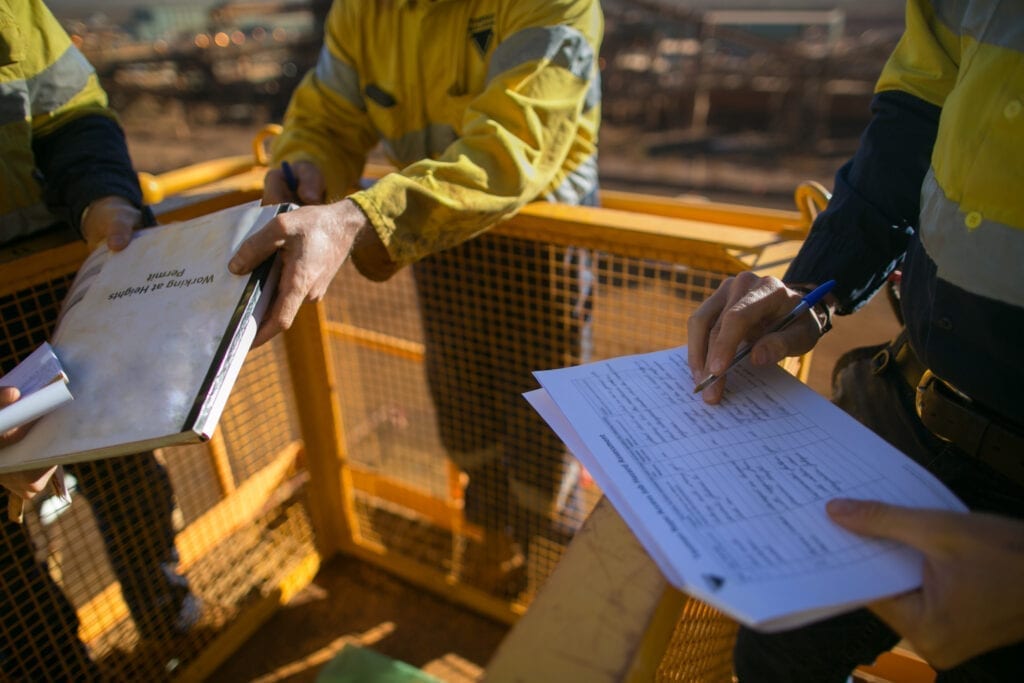
OSHA & Cal-OSHA Safety Compliance
Importance of OSHA Safety Compliance
Complying with OSHA guidelines and regulations is important to businesses large and small, as any employee conducting high hazard activities on the job is susceptible to injuries and illnesses. OSHA advocates for employee safety, ensuring employers are providing safe workplaces, environments, materials, and equipment in which to work. There are occasions where the nature of the job demands that an employee works within a high hazard environment using potentially dangerous materials or equipment. A company must take every step possible to mitigate exposure to these hazards, and create guidelines and training procedures to minimize these dangers and the potential injuries and illnesses associated with them.
Not only is there a legal obligation to implement proper health and safety controls and procedures in your business, there is also an ethical and economic commitment an employer has to its employees. Ensuring your employees are safe and feel safe on the job has far-reaching impacts on all business stakeholders, including security, fulfillment, satisfaction, loyalty, and trust, among other things. A business that is committed to the safety of their employees will attract great employees, and in turn, enable the business to provide superior output to their clients, projects, and the community.
A company that does not identify and implement appropriate health and safety programs puts itself in a position of higher liability and overall risk. This all begins with a thorough workplace assessment and implementation of employee safety manuals. It’s estimated that the total direct and indirect costs associated with workplace injuries and illnesses exceeds $140 billion annually. These costs can come in the form of fines levied by governing agencies, loss of money, business and reputation, PR nightmares, higher insurance costs, legal costs, employee turnover and civil and criminal liability. Not to mention the impact of injuries and illnesses on the lives of individuals that could have been prevented with a proper health and safety program.
What You'll Need to be OSHA Compliant
There are 3 main components to keeping employees safe on the job, and the foundation lies in complying with OSHA:
- Compliance with OSHA laws
- Provide a workplace free of serious recognized hazards
- Examine workplace conditions to ensure compliance
OSHA compliance begins with implementing OSHA Standards that address known major hazards that may exist in the workplace. OSHA Standards were developed when OSHA began in the 1970s, some of them updated, and some of them not. The onus is placed on the employer to provide the most up-to-date versions of these Standards according to their own processes in use. The key here is for the employer to go above and beyond to get a full understanding of the hazards present in the workplace, and implement the most relevant and effective controls and procedures in preventing these hazards from harming employees.
OSHA compliance also requires accurate record-keeping of any workplace incidents that affect the health and safety of employees, known as OSHA 300 logs. These logs record any injuries or illnesses caused in the workplace by potential hazards, and corrective actions that need to be taken to prevent a violation from occurring again. For example, if a fall occurs resulting in an injury, the incident needs to be recorded in detail, and a potential corrective action of preventing another fall from occurring identified and implemented. The key here is to be pro-active and take all potential hazards into consideration while a company develops a health and safety program that complies with OSHA laws.
Steps for Putting Together OSHA Compliant Health & Safety Program
All high hazard industries and businesses engaged in performing potentially high hazard activities that may result in injury or illness to an employee need to take the appropriate steps to evaluate their business, processes, and operations in order to develop an appropriate health and safety program to be compliant with OSHA laws. This can and should be a time-intensive endeavor that a business undertakes in order to provide a safe work environment for their employees. Any oversights in the audit process could lead to OSHA violations, employee injuries, legal fees, insurance costs, and other issues mentioned earlier.
-
Step 1
- Any OSHA compliance audit should begin with a thorough identification of potential physical hazards present in the workplace. These hazards should be addressed and remediated at that time as they pose the greatest immediate threat.
-
Step 2
- Develop customized health & safety manuals containing any applicable OSHA Standards with modern and relevant updates. Research outside sources such as the National Security Council, ANSI, and other safety regulatory bodies relevant to the hazard present in the workplace for the most up-to-date information and guidelines.
-
Step 3
- Develop health and safety training protocols and procedures that are customized to your operations. Training should be conducted by a competent trainer, and should be done at the time of employee hire, and at least annually for all employees exposed to the specific hazards. The training process should be time-consuming, taking 30-60 minutes per topic, or longer if required, to ensure proper training has occurred.
OSHA vs. Cal-OSHA Safety Compliance
Individual states and US territories can implement and oversee their own versions of federal OSHA plans at the state level. These state OSHA plans are approved by federal OSHA, and must meet a minimum effectiveness of the federal OSHA standards and directives. State OSHA plans can be applied to either state/government employees, or state/government employees as well as those in the private sector.
Cal/OSHA is one of the more stringent state OSHA plans in the country, which is why it is often addressed separately. Cal/OSHA has adopted more strict guidelines as well as some unique standards addressing those not found in federal OSHA, including:
- Agriculture
- Repetitive Motion
- Heat Exposure
- Noise Exposure
- Injury & Illness Prevention Plan
- Aerosol Transmissible Diseases
- and many more
One of the largest components of Cal/OSHA that differentiates it from federal OSHA is the Injury and Illness Prevention Plan, or IIPP Safety Manuals. An IIPP is an in-depth plan tailored specifically to an individual business with a proactive focus on finding all hazards in the workplace and developing a plan for preventing and controlling those hazards. California requires that all employers covered under Cal/OSHA implement an IIPP in which all workers in an organization are trained and are encouraged to participate.
OSHA Compliance Requirements Checklist
- Comply with OSHA Standards
- Post OSHA workplace poster and encourage employees to read it
- Provide a workplace free from serious recognized hazards
- Conduct hazard assessments
- Maintain up-to-date written safety and health programs & procedures
- Provide safety training in a language and vocabulary workers can understand
- Provide access to Safety Data Sheets (SDS) when employees use hazardous chemicals
- Train employees on what chemicals they are exposed to
- Use and maintain safe tools and equipment
- Provide Warnings of potential hazards with signs
- Report all work-related fatalities within 8 hours to OSHA
- Employers with more than 10 employees must keep records of work-related injuries & illnesses
- Post the recordkeeping 300A form from February 1 to April 30 each year in a prominent location at the workplace
- Submit electronic injury and illness if your workplace is required to do so
- Provide access to employee medical records and exposure records to employees or their authorized representatives
- Do not discriminate against employees who exercise their rights under the Act (See OSHA Whistleblower Protection)
- Post OSHA citations at or near the work area involved. Each citation must remain posted until the violation has been corrected, or for 3 working days, whichever is longer. Post abatement verification documents or tags
- Correct cited violations by the deadline set in the OSHA citation and submit required abatement verification documentation
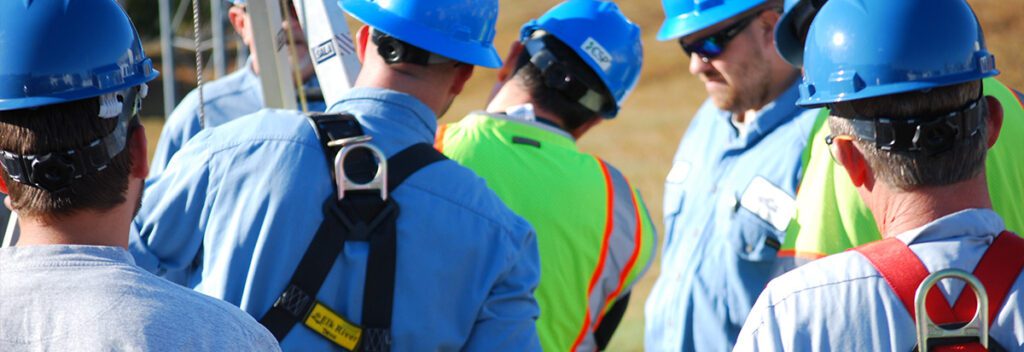
Are You Holding the Required Annual Safety Trainings?
Part of every organization’s best practices is annual safety training, not only a best practice but many of them are required by OSHA standards. While not all are required a handful of them are, and we have a list to help you find out which ones those are.
- Employee Access to Medical Records
- Annual notification for employee access to medical records is required. As a company you’re required to inform workers of their rights to access their medical records, where they’re kept, how to obtain them and who is responsible for keeping them.
- Respiratory Protection and Fit-Testing
- Employees wearing respirators or participating in your company’s respiratory protection program are required to receive annual training regarding respirator use, care, inspection, maintenance, limitations and other requirements.
- Hearing Protection
- If your employees are exposed to noise at or above an 8-hour time weighted average of 85 decibels, your company is required to have a hearing conservation program.
- HAZWOPER
- There are various levels of HAZWOPER. Those with 24 and 40 hour initial training are required to have 8 hours of training annually per year.
- Bloodborne Pathogens
- Anyone who could have bloodborne pathogen exposure is required to have annual training and additional training whenever procedures and tasks are changed.
- Fire Extinguishers and Fire Brigades
- If your company houses an internal fire brigade that fight fires beyond the incipient stage, all fire brigade members are to be provided with annual training. Any members who are required to conduct internal structural firefighting are to have quarterly educational sessions or training as well.
- Asbestos and Other Chemical and Substance-Specific Training
- Employees with potential exposures to OSHA 1910.1003’s 13 carcinogens, vinyl chloride, polyvinyl chloride, inorganic arsenic, lead, cadmium, benzene, coke oven emissions, cotton dust, acrylonitrile (vinyl cyanide), ethylene oxide, formaldehyde, Methylenedianiline and 1, 3-Butadiene are required to have annual safe usage training.
Other Topics to Cover:
Mechanical Power Presses – Operators of mechanical power presses with the Presence Sensing Device Initiation (PSDI) mode on them are required to have annual operator training.
Agriculture Industry – In grain handling facilities annual training is required for workers at grain handling facilities. Topics to be covered include:
- Dust hazards
- Dust accumulation
- Ignition control and prevention
- Cleaning/clearing/housekeeping procedures
- Hot work procedures
- Preventative maintenance
- Lockout/tagout
- Bin entry
- Engulfment hazards (for those entering bins).
For other agriculture-related workplaces where employees are required to use tractors, annual training regarding rollover protective structures is required and those using farm field equipment, farmstead equipment and cotton gins are required to have safe operating and guarding training annually.
Logging Industry – Supervisors and employees in logging industry operation are required to have annual CPR training, with first aid training every 3 years.
Forklift Recertification – Because of their prevalence in industry, we thought we’d also mention that forklift recertifications are due every 3 years as is refresher training for Process Safety Management.
Lockout/Tagout – Not necessarily a training requirement, but an annual requirement nonetheless, employers are required to review their energy control procedures at least annually to ensure the procedure and the requirements of the lockout/tagout standard is being followed.
Need help with getting safety training or safety programs written? Contact 1 Stop Compliance today to start the process and talk to one of our staff members to start.

Updated protecting unvaccinated and other at-risk workers from the coronavirus guidance
The U.S. Department of Labor’s Occupational Safety and Health Administration today issued updated guidance to help employers protect workers from the coronavirus. The updated guidance reflects developments in science and data, including the Centers for Disease Control and Prevention’s updated COVID-19 guidance issued July 27.
The updated guidance expands information on appropriate measures for protecting workers in higher-risk workplaces with mixed-vaccination status workers, particularly for industries such as manufacturing; meat, seafood and poultry processing; high volume retail and grocery; and agricultural processing, where there is often prolonged close contact with other workers and/or non-workers.
OSHA’s latest guidance:
- Recommends that fully vaccinated workers in areas of substantial or high community transmission wear masks in order to protect unvaccinated workers;
- Recommends that fully vaccinated workers who have close contacts with people with coronavirus wear masks for up to 14 days unless they have a negative coronavirus test at least 3-5 days after such contact;
- Clarifies recommendations to protect unvaccinated workers and other at-risk workers in manufacturing, meat and poultry processing, seafood processing and agricultural processing; and
- Links to the latest guidance on K-12 schools and CDC statements on public transit.
As part of the agency’s ongoing commitment to review the COVID-19 Healthcare Emergency Temporary Standard every 30-days, OSHA also said that the safeguards set forth by the standard remain more important than ever. After reviewing the latest guidance, science and data, and consulting with the CDC and partners, OSHA has determined the requirements of the healthcare ETS remain necessary to address the grave danger of the coronavirus in healthcare. OSHA will continue to monitor and assess the need for changes in the healthcare ETS each month.
